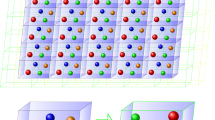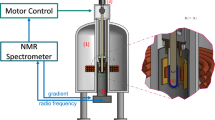Abstract
The effect of stress on the helix-coil transition in a protein or polypeptide is investigated using the methods of statistical mechanics. A case is treated in which the helical sections are regarded as flexible chains withvery long, freely “orienting” segments and another in which they are considered to be rigid rods. Thermoelastic relations are derived; and it turns out that, depending upon conditions, stress can induce the helix-coil transition in one or another direction or do nothing at all. The most probable situations either involve stress applied to a molecule initially helical, in which case the helix is stabilized, or stress applied to the coil form, in which case transformation to the helical form is induced. The helical form exhibits a very low modulus of elasticity (which we also compute), and it is speculated that preservation of, or transition to, the helical form under stress aids in the protection of living tissue from disruption when subjected to large applied strain. Real tissues involve highly organized or quasirandom networks of protein chains. The results of this analysis suggest that, insofar as the mechanical properties of the networks are concerned, the chains can be treated as quasiharmonic strings whose configurations (weighted by potential energy) can be enumerated in order to include entropy effects in the calculation of the network modulus.
Similar content being viewed by others
References
H. Curtis,Biology (Worth Publishers, New York, 1968), p. 80.
J. D. Ferry and P. R. Morrison,J. Am. Chem. Soc. 69:400 (1947).
P. J. Flory,J. Am. Chem. Soc. 78:5222 (1956).
P. J. Flory,Principles of Polymer Chemistry (Cornell University Press, Ithaca, New York, 1953), p. 411.
B. H. Zimm and J. K. Bragg,J. Chem. Phys. 31:526 (1959).
G. W. Lehman and J. P. McTague,J. Chem. Phys. 49:3170 (1968).
B. H. Zimm,J. Chem. Phys. 33:1349 (1960).
T. L. Hill,Introduction to Statistical Thermodynamics (Addison Wesley, Reading, Massachusetts, 1960), Chapter 13.
Author information
Authors and Affiliations
Additional information
Work performed as part of a 1970 summer study project in connection with the Advanced Research Projects Agency Materials Research Council.
Rights and permissions
About this article
Cite this article
Reiss, H. Thermoelastic properties of helical protein molecules. J Stat Phys 3, 69–86 (1971). https://doi.org/10.1007/BF01012188
Received:
Issue Date:
DOI: https://doi.org/10.1007/BF01012188




